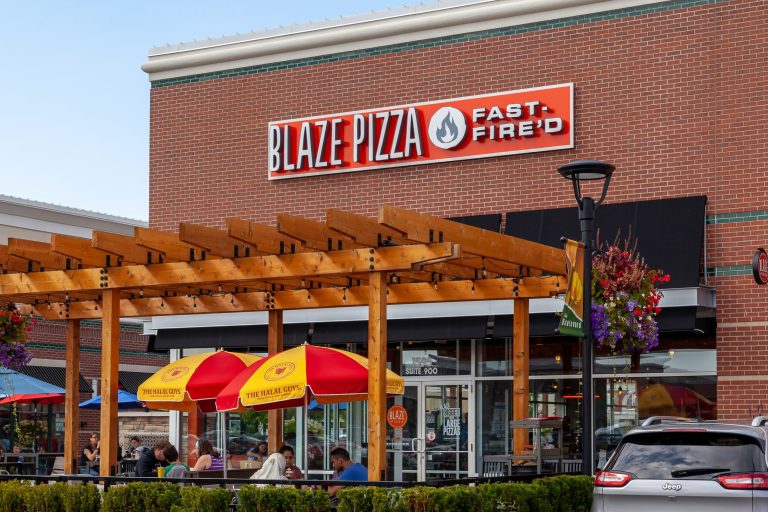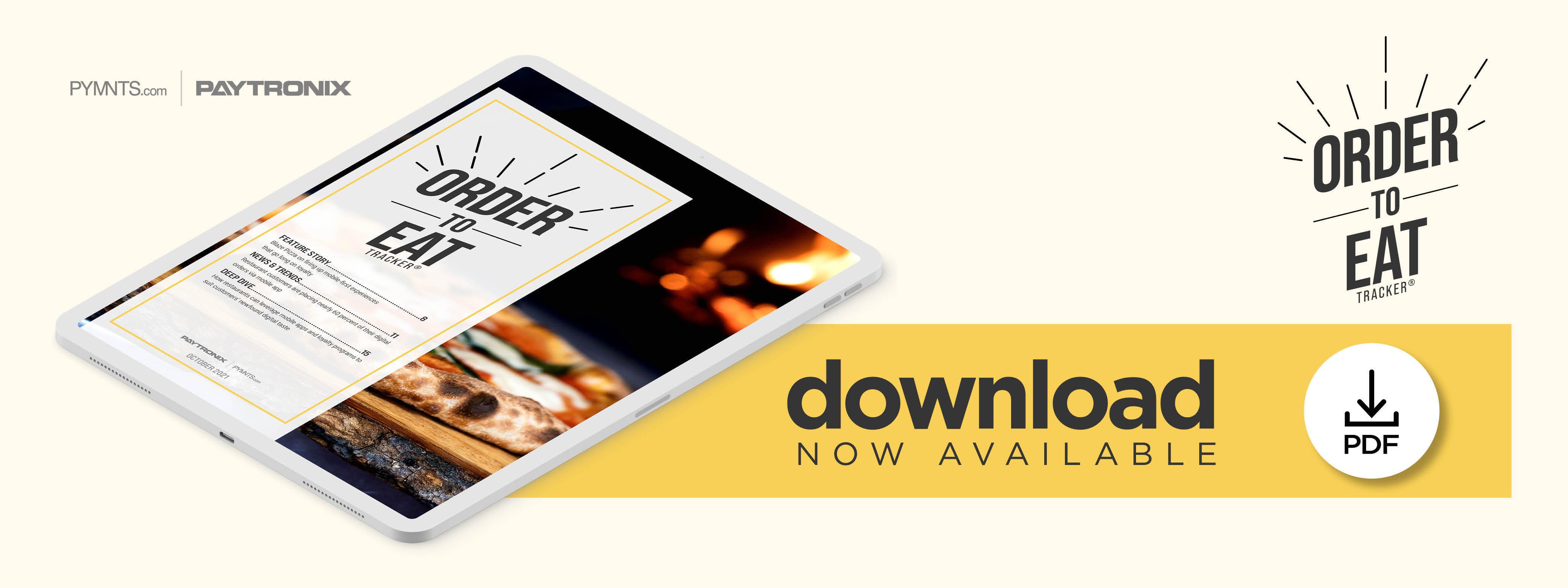Blaze Pizza on Firing up Mobile-First Experiences That Go Long on Loyalty

When Blaze Pizza’s digital orders grew 150% year over year in just one week during the pandemic, the fast-casual chain knew it had to overhaul its mobile experience or lose customers. In the Order To Eat Tracker, Blaze’s Vincent Szwajkowski details how innovations such as app-only menu items and mobile-oriented rewards helped the chain meet patrons’ new needs.
It has been more than a year and a half since the pandemic turned restaurants’ operations upside down. Eateries have had to abide by social distancing rules and capacity limits while tapping into technologies such as contactless payments and upgraded loyalty programs. Before the pandemic, these innovations were often considered conveniences, but they have since become essential to doing business.
Off-premise ordering, delivery and pickup are likely to continue seeing growth even as eateries see customers return to their dining rooms, with one-third of consumers saying they have no plans to return to their pre-pandemic dining habits. It has also become clear that mobile and digital ordering options, as well as advanced rewards programs, have put restaurateurs in the driver’s seat to serve takeout and dine-in patrons and improve customer satisfaction.
Blaze Pizza, a fast casual pizzeria with 335 locations across the U.S., Canada and the Middle East, is leaning into digital and mobile innovations. The California-based chain launched in 2012 and offers pies with a variety of crusts and toppings, allowing customers to select ingredients as their pizzas move down the line once they order.
Vincent Szwajkowski, Blaze Pizza’s brand and growth leader, said in an interview with PYMNTS that the chain’s focus was primarily on non-digital innovations before the pandemic. As many as 85% of diners chose to dine in or order pizza on-site and take it with them, while the chain’s share of sales through digital and mobile ordering channels was in the single digits, he said. Customers would come in, walk down the line and build their pizzas even if they were taking them to go.
However, once the global health crisis hit, Blaze’s business model required an overhaul, seemingly overnight. Szwajkowski said the chain’s digital shift had to be dramatic and lightning-fast because it was not built for the new normal. The chain’s digital business now accounts for 40% of its sales, he said, while in-store purchases make up 60% of sales.
“Everything was turned on its head operationally, and it was challenging,” Szwajkowski said. “In addition to all the technology aspects of it, partnerships … and [our] loyalty program [were] upended. As a result, our digital business grew by 150%, year over year, in a week.”
Modernizing the Mobile Experience
Streamlining and updating the mobile experience has also been a key consideration for quick-service restaurants (QSRs) eager to keep up with the shift. Many rely on mobile ordering options and apps to reach customers remotely.
Blaze originally introduced an app three years ago, but Szwajkowski acknowledged that it was a relatively basic tool that simply allowed customers to place orders and access its loyalty program. The brand went through a website redesign in 2019 and upgraded its loyalty offering, Flames, which he said saved it during the pandemic.
The latest version allows patrons to earn one “flame” for each $1 spent, and these flames can be redeemed for free food. The company also has worked to add exclusive offerings, such as an option for large pizzas, for customers who use its app.
“The app was ultimately used as a way to get ongoing engagement with our guests,” he said.
Ongoing Mobile Innovation
The chain’s investments in mobile solutions have not stopped there. Blaze relaunched its app in September with a news feed and push notifications, which the company said have been crucial to driving growth.
Building interactivity into the mobile experience also has become a top priority, Szwajkowski said. Patrons wanted to be able to build their pizzas digitally, and the company has worked to meet their expectations by enabling its app and website to display pictures that mirror the in-person experience of choosing toppings.
“Customers told us, ‘I really love the experience that I get in the restaurant. I love the smells of the meats and vegetables,’ and that inspired us to bring more photography forward,” he explained.
More enhancements still are needed as QSRs recalibrate their strategies for digital and mobile ordering. Szwajkowski said one of the biggest challenges is fixing a digital order that had disappointed a customer, such as when a pizza was delivered with the wrong ingredients. Customers who experience these issues while dining in can always send their orders back, but this is not an option for customers dining remotely.
Yet another goal is taking loyalty and rewards programs to the next level. Simply allowing customers to earn and spend rewards is considered a basic loyalty program function, but restaurants that want to stand out will need to create unique perks that drive engagement further.
“As we go into 2022, one of our focus areas is how to increase the value proposition within our reward program that goes beyond spend and redeem,” Szwajkowski said. “There’s an opportunity for us to create more of an inclusive yield with our loyalty program members and provide more of a community environment.”
Meeting evolving consumer demands and expectations requires restaurants to implement both digital and mobile tools that improve their in-house operations and power a more satisfying consumer experience. Tailoring their apps and mobile experiences, as well as the loyalty programs offered via these channels, to suit customers’ new digital tastes will prove invaluable in the years ahead.
